UC Gardening Blogs
No Winner Yet in Beer-for-a-Butterfly Contest!
If you've been looking for that elusive first-of-the-year cabbage white butterfly in the...
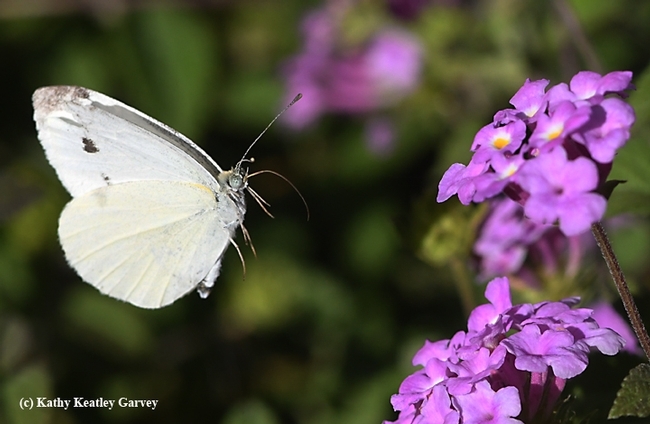
If you collect the first-of-the-year cabbage white butterfly, Pieris rapae, in the three-county area of Sacramento, Yolo and Solano, you could win the "Beer for a Butterfly" contest. Here a cabbage white heads for lantana.(Photo by Kathy Keatley Garvey)
About Those Bee Stings: A Question Everyone Wants to Know
It's a question everyone wants to know. When folks hear about the 70-year beekeeping/bee wrangling...
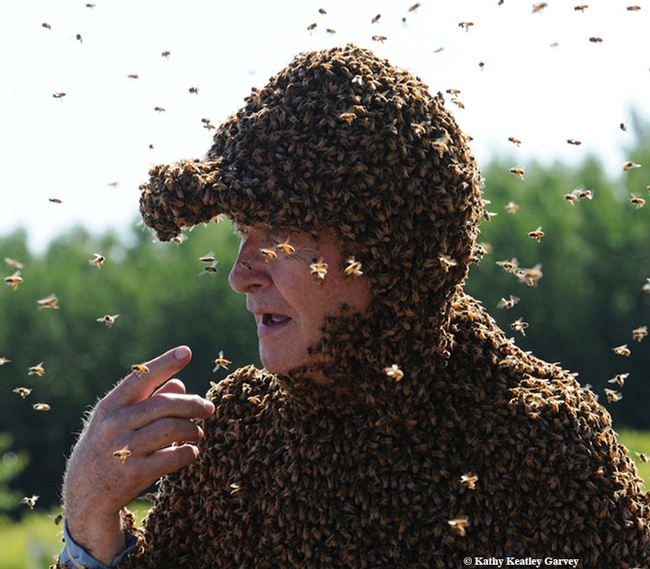
"Bee Man" Norm Gary clustered with bees during a bee wrangling stunt. (Photo by Kathy Keatley Garvey)
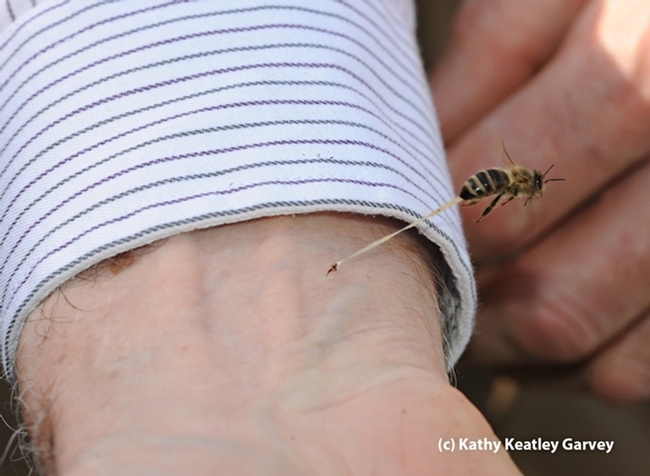
Close-up of a bee sting. This photo was taken when a guard bee was defending her colony. Note the stinger embedded in the arm and the stretched abdominal tissue as the bee pulls away. (Photo by Kathy Keatley Garvey)
Where Did Those Spices Come From?
Baking persimmon cookies with chocolate chips for our annual Master Gardener Wreath Clinic, I began to wonder where the ingredients, especially the spices, I was using had come from. Yes, I know the grocery store, but really, which far-away country, what exotic plant? The cookies had cinnamon, cloves, and nutmeg. I needed to do a little research.
Cinnamon comes from two sources. The first is the inner bark of a tree native to Sri Lanka: Cinnamomum verum., also known as Ceylon cinnamon. The harvesters score the tree bark and peel the bark from the tree to get to the reddish-brown inner bark. The bigger pieces of the inner bark are ground into what I may have had in my spice bottle. The smaller pieces curl when dried that can yield the cinnamon sticks used in cider and hot chocolate. These sticks have many thin layers and are easily crushed. My cinnamon could also have come from Cinnamomum cassia. This evergreen is found in China, Vietnam and Southeast Asia. The bark is thicker, and more often, cinnamon sticks are from this source. They will be just one layer that has curled.
Cloves are actually the dried flower buds of an evergreen tree native to the Spice Islands (Malaku Islands) in Indonesia – Syzyium aromaticum. The buds are picked while they are still pink, on their way to turning red, are dried and then used as a spice. Interestingly, both cinnamon and cloves have the same essential oil, eugenol.
Mystica fragrans is a “two-fer” source for mace and nutmeg. Nutmeg is the inner kernel of the outer layer or aril, mace, from the fruit tree Myristica fragrans. Nutmeg was originally found in the Bandu Islands, also part of Malaku, Indonesia. It is now grown not only in Indonesia, but in Guatemala, India and Grenada, where it is the country's most famous export and is even found on the country's flag. For some, the scent of nutmeg is like that of pines. The oil in the kernel is myristicin and can also be found in much smaller quantities in celery and carrots, dill and parsley.
My cookies, while baked locally, are actually from around the world. And when I consider the lengths made to grow, harvest, prepare, and bottle the spices and then get them to my local store, the price I pay doesn't seem high. Bon Appetit!
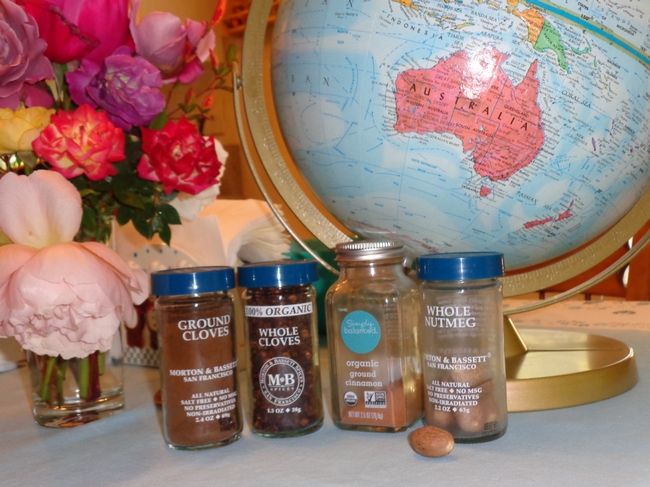
photo by Michelle Davis
Yes, Locusts Browse Computer Dating Sites
Do locusts browse computer dating sites, trying to find a match made in heaven? They do. Just...
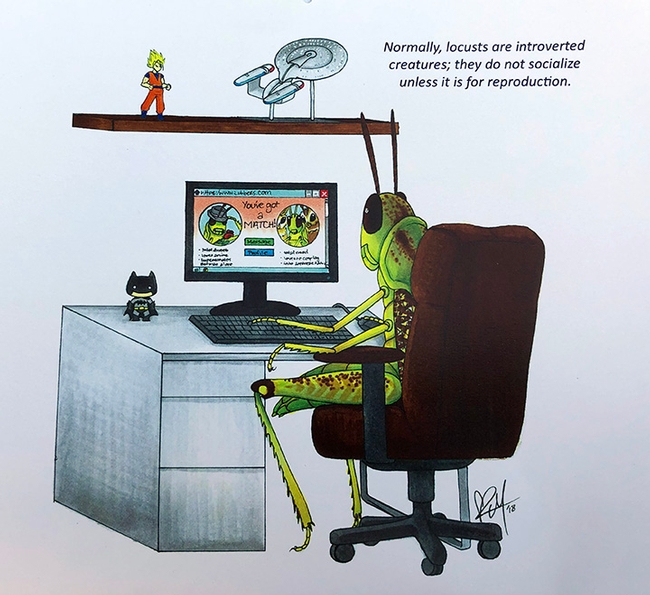
This is the illustration that Karissa Merritt, UC Davis entomology major and artist, created for the Bohart Museum of Entomology calendar for the month of January. The calendar is available to the public for $12.
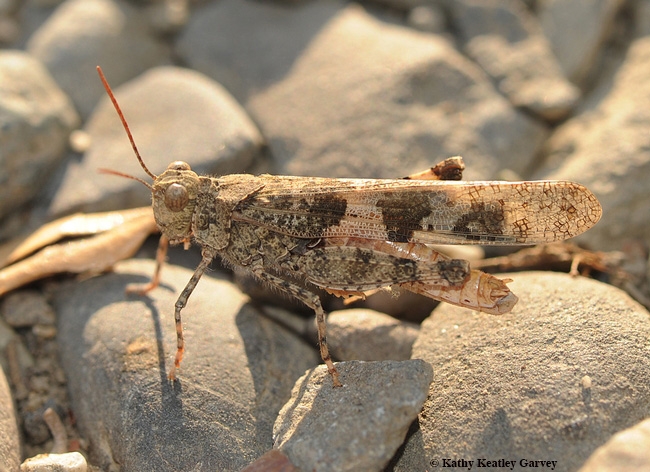
This banded-winged grasshopper--family Acrididae, subfamily Oedipodinae--apparently has little interest in checking out dating sites on the computer. Kathy Keatley Garvey captured this image on the UC Davis campus in September 2011; identification by Bohart senior museum scientist Steve Heydon.
Treasured Memories of 2018: Bruce Hammock Honored--and His Noted Research All Began with a Caterpillar
Looking back on 2018, Bruce Hammock, distinguished professor at the University of California,...
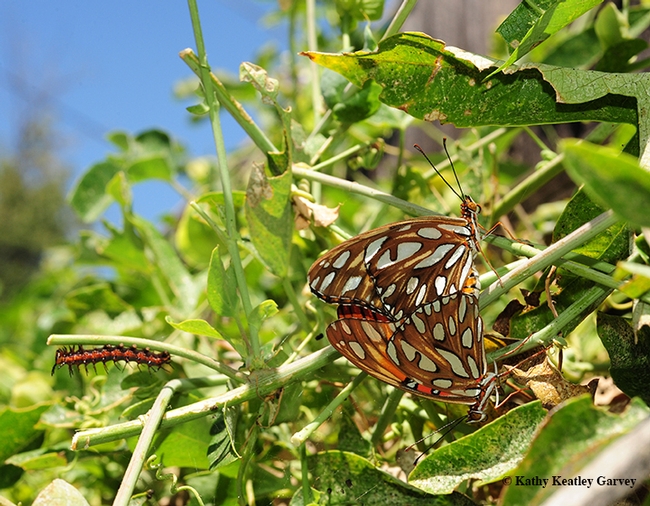
UC Davis distinguished professor Bruce Hammock's noted research on chronic pain all began at UC Berkeley when he wondered how caterpillars turn into butterflies. In this photo: two Gulf Fritillary butterfly mating, while a caterpillar munches passionflower leaves in the background. (Photo by Kathy Keatley Garvey)
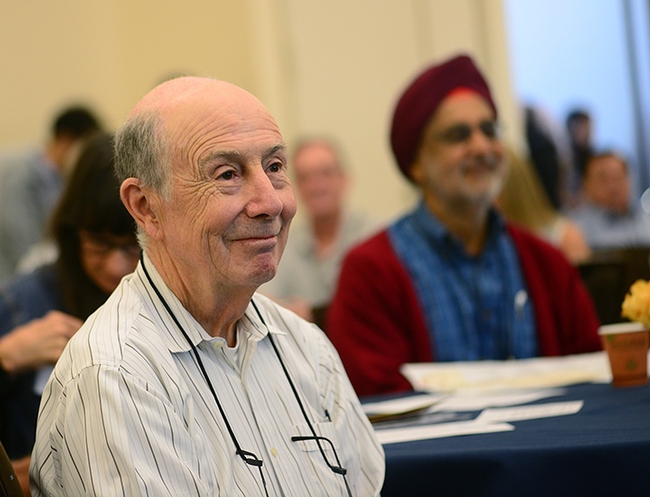
Bruce Hammock smiles as he receives accolades. In the back is his longtime friend Sarjeet Gill, distinguished professor at UC Riverside. They co-discovered an enzyme, epoxide hydrolase during their graduate studies at UC Berkeley. (Photo by Kathy Keatley Garvey)
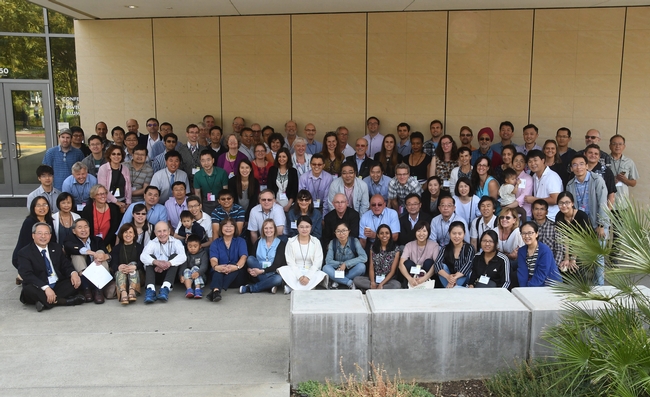
Some 100 scientists (and their families) from 10 different countries converged on the UC Davis campus to honor their mentor, Bruce Hammock. (Photo by Kathy Keatley Garvey)



